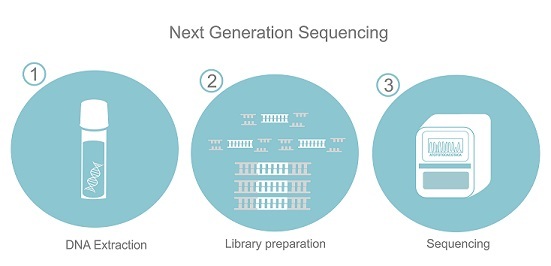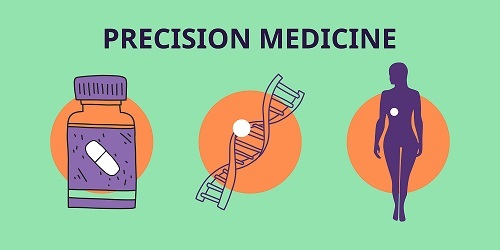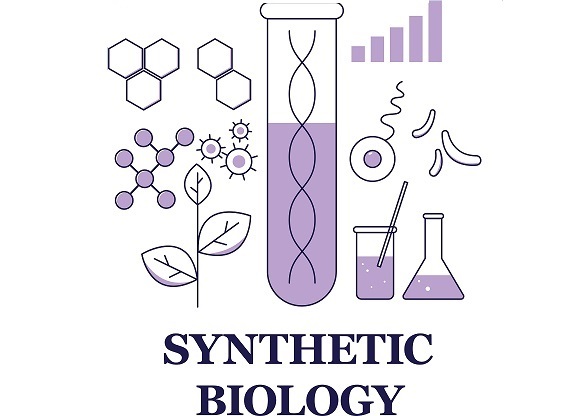
 Data Structure
Data Structure Networking
Networking RDBMS
RDBMS Operating System
Operating System Java
Java MS Excel
MS Excel iOS
iOS HTML
HTML CSS
CSS Android
Android Python
Python C Programming
C Programming C++
C++ C#
C# MongoDB
MongoDB MySQL
MySQL Javascript
Javascript PHP
PHP
- Selected Reading
- UPSC IAS Exams Notes
- Developer's Best Practices
- Questions and Answers
- Effective Resume Writing
- HR Interview Questions
- Computer Glossary
- Who is Who
Advanced Techniques and Applications in Bioinformatics
Introduction
Bioinformatics is a rapidly growing field that has revolutionized our understanding of the biological world.
It involves the integration of computational and statistical techniques with biology to analyse and interpret large and complex biological data.
The field has made significant advances in recent years, thanks to the development of advanced techniques and applications in bioinformatics.
In this article, we will discuss some of the advanced techniques and applications in bioinformatics, their importance, and how they are used in research and medical fields. We will also look at the future direction of bioinformatics and how it will shape our understanding of the biological world.
Techniques
Next-Generation Sequencing (NGS)
Next-Generation Sequencing (NGS) is a high-throughput technology that has revolutionized the field of genomics. It is a powerful tool that can sequence millions of DNA molecules simultaneously, providing a wealth of information about the genome.
NGS has enabled the sequencing of entire genomes in a matter of days, which was previously impossible with traditional sequencing methods.
NGS has numerous applications in bioinformatics, such as:
Genome Assembly
NGS can be used to assemble de novo genomes, which is essential for understanding the genetic makeup of organisms.
Transcriptome Analysis
NGS can be used to sequence mRNA molecules, providing information on gene expression levels, alternative splicing events, and identification of novel transcripts.
Epigenetic Analysis
NGS can be used to analyse DNA methylation, histone modification, and chromatin structure, which play important roles in gene regulation.
Metagenomics
NGS can be used to study complex microbial communities, providing information on the diversity and function of the microbial population.

Structural Bioinformatics
Structural bioinformatics is the study of the three-dimensional structure of biological macromolecules, such as proteins, DNA, and RNA. It involves the use of computational methods to predict the structure of macromolecules and analyse their function.
Structural bioinformatics has numerous applications in bioinformatics, such as:
Drug discovery
Structural bioinformatics can be used to identify potential drug targets by predicting the structure of proteins and analysing their binding sites.
Protein engineering
Structural bioinformatics can be used to design new proteins with specific functions or improve the stability of existing proteins.
Functional annotation
Structural bioinformatics can be used to predict the function of proteins based on their structure and identify potential functional domains.
Evolutionary analysis
Structural bioinformatics can be used to study the evolution of proteins by comparing their structures across different species.
Machine Learning
Machine learning is a branch of artificial intelligence that involves the development of algorithms that can learn from data and make predictions. Machine learning has numerous applications in bioinformatics, such as:
Gene Expression Analysis
Machine learning can be used to identify differentially expressed genes and predict their function based on gene ontology.
Protein Structure Prediction
Machine learning can be used to predict the structure of proteins based on sequence data and identify potential functional domains.
Drug Discovery
Machine learning can be used to predict the activity of potential drug candidates and identify potential drug targets.
Personalized Medicine
Machine learning can be used to predict the efficacy of different treatments for individual patients based on their genetic and clinical data.
Applications
Precision Medicine
Precision medicine is an approach to healthcare that involves the customization of medical treatments based on the genetic and clinical characteristics of individual patients. Precision medicine has numerous applications in bioinformatics, such as:
Diagnosis
Precision medicine can be used to diagnose rare genetic diseases and identify potential treatment options.
Treatment Selection
Precision medicine can be used to select the most effective treatment for individual patients based on their genetic and clinical data.
Drug Development
Precision medicine can be used to develop new drugs that target specific genetic mutations or pathways.
Disease Prevention
Precision medicine can be used to identify individuals who are at high risk of developing certain diseases and implement preventive measures.

Functional Genomics
Functional genomics is the study of the function of genes and their products, such as proteins and RNA molecules.
It involves the use of various techniques, such as gene expression analysis, epigenetic analysis, and proteomics. Functional genomics has numerous applications in bioinformatics, such as:
Identification of Disease Biomarkers
Functional genomics can be used to identify biomarkers that are associated with certain diseases, which can be used for early detection and diagnosis.
Drug Discovery
Functional genomics can be used to identify potential drug targets and develop new drugs that target specific genes or proteins.
Understanding Gene Regulation
Functional genomics can be used to study how genes are regulated and how this regulation is altered in disease states.
Predicting Drug Response
Functional genomics can be used to predict the response of individual patients to certain drugs based on their genetic and clinical data.
Synthetic Biology
Synthetic biology is an interdisciplinary field that involves the design and construction of biological systems that have novel functions or properties.

It involves the use of engineering principles to design biological systems that can be used for various applications, such as bioremediation, biosensing, and drug delivery
Synthetic biology has numerous applications in bioinformatics, such as:
Engineering Biological Systems
Synthetic biology can be used to engineer biological systems that have specific functions, such as biosensors that detect environmental pollutants.
Developing New Therapeutics
Synthetic biology can be used to develop new therapeutics, such as synthetic peptides that can be used to target specific disease pathways.
Creating New Materials
Synthetic biology can be used to create new materials, such as biodegradable plastics that are produced by engineered bacteria.
Bioremediation
Synthetic biology can be used to engineer bacteria that can degrade environmental pollutants.
Future Directions
The field of bioinformatics is rapidly evolving, with new techniques and applications being developed every day. Some of the future directions of bioinformatics include:
Single-cell Genomics
Single-cell genomics is a rapidly growing field that involves the analysis of individual cells. It has the potential to revolutionize our understanding of cell biology and disease states.
Artificial Intelligence
Artificial intelligence has the potential to transform bioinformatics by enabling the analysis of large and complex datasets. Machine learning algorithms can be used to identify patterns and make predictions based on biological data.
Multi-omics Integration
multi-omics integration involves the integration of various types of biological data, such as genomics, transcriptomics, and proteomics. It has the potential to provide a more comprehensive understanding of biological systems.
Conclusion
Bioinformatics is a rapidly growing field that has revolutionized our understanding of the biological world. Advanced techniques and applications in bioinformatics have enabled the analysis and interpretation of large and complex biological data, leading to numerous discoveries and breakthroughs in research and medical fields.
The future of bioinformatics looks promising, with new techniques and applications being developed every day that have the potential to transform our understanding of the biological world.

